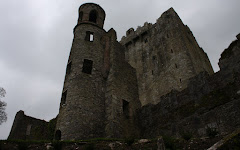For our last paper in my Korean Language and Culture Class (University of Maryland, 3 credits), Professor Kim instructed us to write a personal response about our first impressions of Korea. What follows is my paper for that assignment:
Before I ever experienced Korea, I lived in Europe for eighteen years and then Japan for nine months. From Japan, some friends and I took a quick jaunt to Seoul over a Memorial Day weekend, and I remember thinking multiple times during that brief visit: Japan is Germany and Korea is Italy! Four and a half years after that first trip to Seoul, I actually live in Seoul—four months now—and Korea is still Asia’s Italy! Certainly, like both Germany and Japan, Korea’s infrastructure functions and performs with ease and on schedule, and Korea, too, is a technological powerhouse. In demeanor, attitude, and style, though, Korea is Italy: louder, in your face, and more than willing to nudge you, even bump you, if necessary. Koreans are not so self-contained either, and they do not dwell inside the boundaries of an inner realm of their own creation; instead they are expressive and offer easy access. On trains in Korea, I never have the sense of being invisible; I am noticed, talked about, talked to, and motioned over to take a just vacated seat.
Korea is exuberance—energy, motion, and joy. It is wind, not a polite breeze. It is breaking surf, not glassy calm. It is a sprint, not a stroll. During that first visit to Seoul, I remember walking with my friends along a sidewalk with very few other people in view at all. From behind we heard the sound of running footsteps approaching us. When we turned around to look, we saw a young man—late teens perhaps—running towards us and then on past us. He had no interest in us, no one was chasing him, and he was not wearing running apparel or even running shoes. In fact, he was also hauling a small backpack on his back. And I will never forget the expression on his face: pure pleasure—he was running only because he wanted to run. I run sometimes in cities—to cross a street before a light changes, to catch up with someone, because the sidewalk tipped to a decline and I couldn’t resist the urge. But usually I also feel somewhat undignified or lacking in proper decorum; after all, no one else really seems to run on city streets. However, in Seoul I have seen people—besides me—run, and I’m not talking about the serious runners running their course; I’m talking about people clad in jeans or overcoats, people wearing boots or dress shoes, and people toting shoulder bags or shopping bags. At moments, someone will run.
Korea is a new world order—on the streets! Post yourself at any intersection in Seoul and watch the dance of vehicles and pedestrians as orchestrated by the stoplights . . . or not. And that dance? Ballet or ballroom it definitely is not. Instead, it is all improvisation based on random fundamentals learned in a jazzy interpretation of driver’s education and instituted with the bravado of break dancing. Car horns play multiple roles to instruct the dance format: announcing one’s presence, criticism of another’s style, warning of portending doom, and just plain old accompaniment for the developing drama. On my team at work, I have five colleagues; in the last month two have had their cars totaled in a Seoul intersection while commuting to work, and a third had his two rear wheels punctured when driving around—as directed by police, may I add—the scene of another accident. Driving in Korea is not for the timid or the slow of reflex!
Korea is juxtaposition, a land where a block of high-rise apartment buildings stands beside a lush green patchwork of rice paddies. Within a city like Seoul, an ancient palace from a bygone dynasty unfurls in classic lines of Asian architecture inside a valley of towering glass and steel skyscrapers. On a peninsula where two Korean nations side by side have developed so separately and so differently for over fifty years, a native Korean speaker from the North who arrives in the South must take language classes to achieve full competency in the Korean language spoken in the South due to the massive influx of English words now included in the language.
Korea is a motion picture—light and shadow, colors, shapes, and an unfolding narrative—not a framed black and white or sepia-toned photograph. Of course, Korea has a storied history and a rich cultural heritage, but its view looks to the present and on to the future. With a reverence for what was, Korea seems to always be in the process of becoming. Sometimes that requires the phoenix-like ability to re-emerge from ashes and sometimes just constant nurturing of the creativity and dedication necessary to continually reinvent oneself in a changing world.
Korea is not perfection, but it is possibility. The heart beats passionately, the eyes search the horizons and glimpse beyond, the mind asks questions and constructs solutions, determination remains resolute, and the soul opens to what could be.
































2 comments:
Very picturesque writing. I enjoyed it.
Oh so well written.
Post a Comment